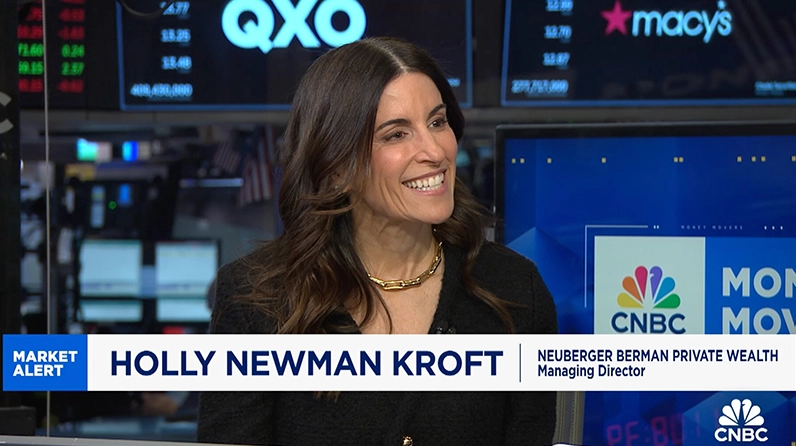

Today’s print coupled with the still strong labor market reinforces the Fed’s recent pause which may now extend into the second half of 2025
U.S. CPI readings for January were hotter than expected, setting the stage for a challenging first half of 2025 for the Federal Reserve as it attempts to bring borrowing costs down against the backdrop of a still strong economy. U.S. headline CPI was up +0.5% month-over-month and up +3.0% year-over-year versus consensus expectations for +0.3% and +2.9%, respectively. Core CPI also accelerated in the month, up +0.4% month-over-month and up +3.3% year-over-year; economists were expecting +0.3% and +3.1%, respectively. Notably, the monthly gain in headline CPI is the biggest since August 2023 while the monthly gain in core CPI is the biggest since March 2024.
Meaningful increases in the cost of shelter, energy and food were the primary contributors to the move higher in headline inflation for the month, with shelter up +0.4%, gasoline up +1.8%, fuel oil up a staggering +6.2% and food up +0.4%. Typically, greater emphasis is on core CPI from a monetary policy perspective, but the continued pressure on lower-income consumers, represented by the increases in these three categories, likely will be watched closely by the White House and Congress.
As for core CPI, shelter remains a meaningful contributor to the measure’s continued stickiness, but is showing modest improvement when compared with the prints over the last two years for both rent and owners’ equivalent rent. More concerning in this month’s print was a reversal in the improvement in what is termed supercore services (up +0.8%) as airline fares, motor vehicle insurance, education, personal care, hospital care and even cable television services were notably higher on the month. With that said, it is worth noting the parallels to the start of 2024, which exhibited a similar spike, perhaps implying some seasonality and potentially creating a false signal for the Fed and rates markets.
This print, coupled with a still-strong labor market delivering higher wage growth, reinforces the Fed’s recent pause and the stance that Fed Chair Jerome Powell laid out in his testimony to Congress yesterday. In his comments, Chair Powell reiterated the Fed’s view that monetary policy is “significantly less restrictive than it had been” and acknowledged that the Fed could remain on hold for longer if necessary should inflation remain at or above current levels. He was also hesitant to “speculate” on the impact of tariffs, but provided a comparison to 2019 when the Fed did cut rates in response to economic pressures.
What is clear from today’s market reaction (equities down and bond yields up) is that economic data continues to affect portfolio positioning. More importantly, it remains top of mind for Washington and for U.S. consumers across the country; one need only refer to the most recent University of Michigan survey of consumers and the spike in inflation expectations for evidence. Any meaningful acceleration in goods prices from here, including what could result from widespread tariffs, will likely only exacerbate any pickup in services inflation and, seasonality aside, there are more forces pushing prices higher in the short term than lower.
Our view remains that the U.S. economy can deliver above-trend growth this year. This implies that the Fed’s pause might indeed extend into the second half of the year. We are not forecasting a rate hike. Despite the potential for a longer pause, we do not believe that this disrupts our views that equity markets are likely to broaden and that fiscal policy will be the focus for bond investors this year. As such, we encourage investors to take advantage of volatility in the markets to reallocate portfolios to align with long-term targets, and position for a period of greater policy certainty.


INSIGHTS
CIO Notebook: Payrolls to the Wings as Tariffs Take Center Stage

INSIGHTS
CIO Notebook: Risk Assets Under Pressure as Trump Expands Tariffs

VIDEO
Holly Newman Kroft Discussed Market Uncertainty on CNBC

VIDEO
Celebrating Women’s History Month 2025

INSIGHTS
CIO Notebook: Fed Holds Rates Steady but Projections Reflect Policy Uncertainty

INSIGHTS
Private Equity in Perspective: Navigating Extremes and Unlocking Long-Term Value

INSIGHTS
CIO Notebook: Cooler Inflation Calms Nerves but Tariffs Still Loom Large
Accolades
Our Advisors Ranked in “Barron’s Top 1,200 Financial Advisors” List for 2025
INSIGHTS
CIO Notebook: Light U.S. Payrolls Close Out a Noisy Week
MARKET COMMENTARY
Trade Debates While Markets Rotate
INSIGHTS
U.S. Tariffs Hit Markets as Growth Questions Emerge
VIDEO
Holly Newman Kroft Joined CNBC to Discuss Market Outlook
Accolades
Forbes | SHOOK 2025 Top Women Wealth Advisors
IMPORTANT INFORMATION:
This material is provided for informational purposes only and nothing herein constitutes investment, legal, accounting or tax advice, or a recommendation to buy, sell or hold a security. This material is general in nature and is not directed to any category of investors and should not be regarded as individualized, a recommendation, investment advice or a suggestion to engage in or refrain from any investment-related course of action. Any views or opinions expressed may not reflect those of the firm as a whole. Neuberger Berman products and services may not be available in all jurisdictions or to all client types. Diversification does not guarantee profit or protect against loss in declining markets. Investing entails risks, including possible loss of principal. Investments in private equity are speculative and involve a higher degree of risk than more traditional investments. Investments in private equity are intended for sophisticated investors only. Unless otherwise indicated, returns shown reflect reinvestment of dividends and distributions. Indexes are unmanaged and are not available for direct investment. Investing entails risks, including possible loss of principal. Past performance is no guarantee of future results.
Portfolio positioning views expressed herein are those of Neuberger Berman’s Private Wealth Investment Group, which may include those of the Neuberger Berman’s Asset Allocation Committee. Asset allocation and positioning views are based on a hypothetical reference portfolio. The Private Wealth Investment Group analyzes market and economic indicators to develop asset allocation strategies. The Private Wealth Investment Group works in partnership with the Office of the CIO. The Private Wealth Investment Group also consults regularly with portfolio managers and investment officers across the firm. The Asset Allocation Committee is comprised of professionals across multiple disciplines, including equity and fixed income strategists and portfolio managers. The Asset Allocation Committee reviews and sets long-term asset allocation models, establishes preferred near-term tactical asset class allocations and, upon request, reviews asset allocations for large, diversified mandates. Asset Allocation Committee members are polled on asset classes and the positional views are representative of an Asset Allocation Committee consensus. The views of the Asset Allocation Committee and the Private Wealth Investment Group may not reflect the views of the firm as a whole and Neuberger Berman advisers and portfolio managers may take contrary positions to the views of the Asset Allocation Committee or the Private Wealth Investment Group. The Asset Allocation Committee and the Private Wealth Investment Group views do not constitute a prediction or projection of future events or future market behavior. Defensive positioning generally means an underweight bias on allocations to risk assets such as equities and alternatives. Positioning views may change over time without notice and actual client positioning may vary significantly. Discussion of yield characteristics or total returns of different asset classes are for illustrative purposes only. Such asset classes, such as equities and fixed income, may have significantly different overall risk-return characteristics which should be consider before investing.
The information in this material may contain projections, market outlooks or other forward-looking statements regarding future events, including economic, asset class and market outlooks or expectations, and is only current as of the date indicated. There is no assurance that such events, outlook and expectations will be achieved, and actual results may be significantly different than that shown here. The duration and characteristics of past market/economic cycles and market behavior, including any bull/bear markets, is no indication of the duration and characteristics of any current or future be market/economic cycles or behavior. Information on historical observations about asset or sub-asset classes is not intended to represent or predict future events. Historical trends do not imply, forecast or guarantee future results. Information is based on current views and market conditions, which will fluctuate and may be superseded by subsequent market events or for other reasons.
Discussions of any specific sectors and companies are for informational purposes only. This material is not intended as a formal research report and should not be relied upon as a basis for making an investment decision. The firm, its employees and advisory accounts may hold positions of any companies discussed. Nothing herein constitutes a recommendation to buy, sell or hold a security. It should not be assumed that any investments in securities, companies, sectors or markets identified and described were or will be profitable. Investment decisions and the appropriateness of this content should be made based on an investor's individual objectives and circumstances and in consultation with his or her advisors.
Neuberger Berman Investment Advisers LLC is a registered investment adviser.
The “Neuberger Berman” name and logo are registered service marks of Neuberger Berman Group LLC.